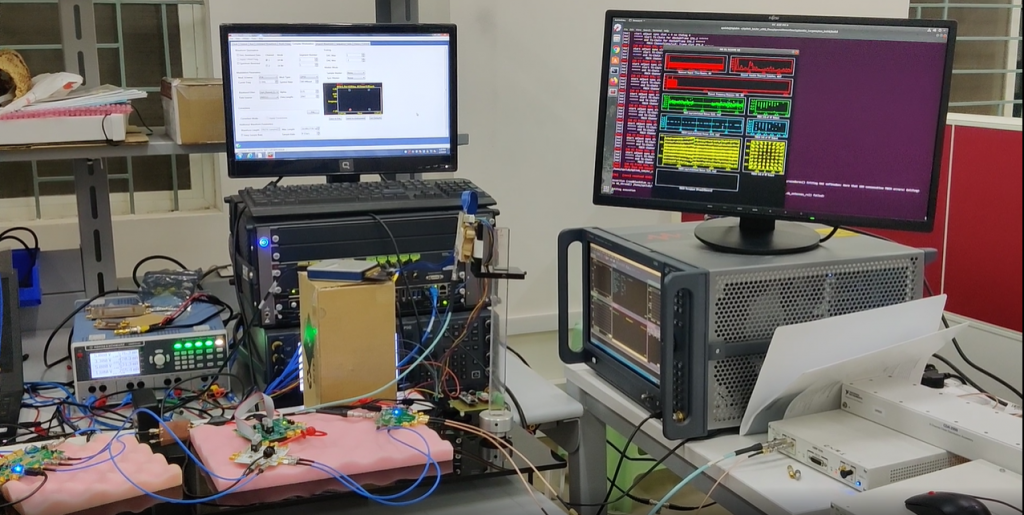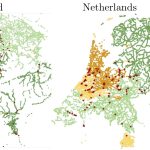Is India ready for the 5G revolution? Researchers at IISc and institutes across the country are developing and testing new technologies that could fundamentally transform the way we communicate with each other

Radically immersive virtual reality experiences. Self-driving cars steered over mobile networks. Robots that seamlessly talk to each other on a factory floor. This is the world that 5G, the next generation of wireless technology, promises – a world where everything and everyone is connected.
The 5G revolution is already here. Last year, South Korea and the US rolled out the first full-fledged 5G networks, and many other countries are starting to put in place guidelines to regulate their use. 5G devices, especially smartphones, are also beginning to flood the market.
To ensure that India does not fall too far behind, the Department of Telecommunications, Government of India, established a “5G test bed” in 2018 with a budget of about Rs 220 crore. Several institutions, including IISc, are part of this project.
Its goal is not just to develop and test new technologies within the country, but also train students and work closely with companies to plug in their solutions, says Chandra Murthy, Professor in the Department of Electrical Communication Engineering (ECE), who leads IISc’s efforts.
After voice calls, SMS and data services, 5G represents the next leap forward in mobile communication. Besides faster downloads (an entire HD movie can be downloaded in just a few seconds), it offers an almost instantaneous response – to relay a brake command to a remotely-driven car, for instance – and better connectivity for applications like telesurgery.
Like 3G and 4G before it, a 5G network transmits data between users and base stations (“cell towers”) using radio waves, which occupy the low frequency end of the electromagnetic spectrum. With 4G, users can still stream high quality videos, and make calls while moving fast. But the bandwidth or portion of the spectrum available is tightly controlled by governments, and split among an increasing number of service providers vying with each other to recruit more subscribers. This congestion can restrict data speeds.
5G networks, on the other hand, are expected to be over 100 times faster. One of the technologies driving this, which is being explored at IISc, is called massive MIMO (Multiple Input Multiple Output). It uses a larger array of antennas at both the base station and the device, opening up multiple paths for a signal to travel and allowing many different signals to flow simultaneously.
5G technology also seeks to exploit higher frequencies of the electromagnetic spectrum, large swathes of which are unused. While 4G networks typically use frequencies in the range of 700 MHz-2,500 MHz, 5G frequencies could potentially go up to 100 GHz.
Of particular interest are waves with frequencies above 24 GHz, called millimeter waves, which can support very high data speeds. “We are trying to build hardware that can work in these frequencies,” says KJ Vinoy, Professor in ECE. He and his team have been able to use these waves to stream high quality gigabit-sized videos simultaneously on multiple devices in the same room. This could prove useful in a digital classroom or meeting room, or even a flight cabin. Because these waves dissipate fast in the atmosphere, they are currently best suited for indoor settings, says Vinoy.

Another area of research is using visible light instead of radio waves to transmit data. This could be useful in places like power plants or hospitals where wi-fi cannot be used due to electronic interference, but LED lights can. “The visible light spectrum comes with a larger bandwidth. It is also unlicensed so nobody is trying to slice it up and sell it,” explains Varun Raghunathan, Assistant Professor in ECE.
In the context of 5G, “li-fi” routers that transmit light could theoretically replace current wi-fi routers and link up with 5G mobile networks to expand coverage. “One of my students is looking at how to seamlessly hand over from a visible light communication setup to a 5G radio frequency link,” says Raghunathan. His team is also exploring the use of lasers instead of LEDs – which could increase the data speeds – while at the same time ensuring that they are safe for the eyes in indoor settings.
Developing such technologies in India, however, isn’t without challenges. Vinoy explains, “We don’t have the ecosystem around us to even build printed circuit boards to the kind of accuracy and precision we will need.”
Moving from 4G to 5G is also an expensive affair, says Murthy. Millions of new smartphones and devices which can work with 5G networks will need to be manufactured. Antennas and base stations will have to be completely overhauled. “It may take another 5 years for it to become available throughout the country,” he adds.






